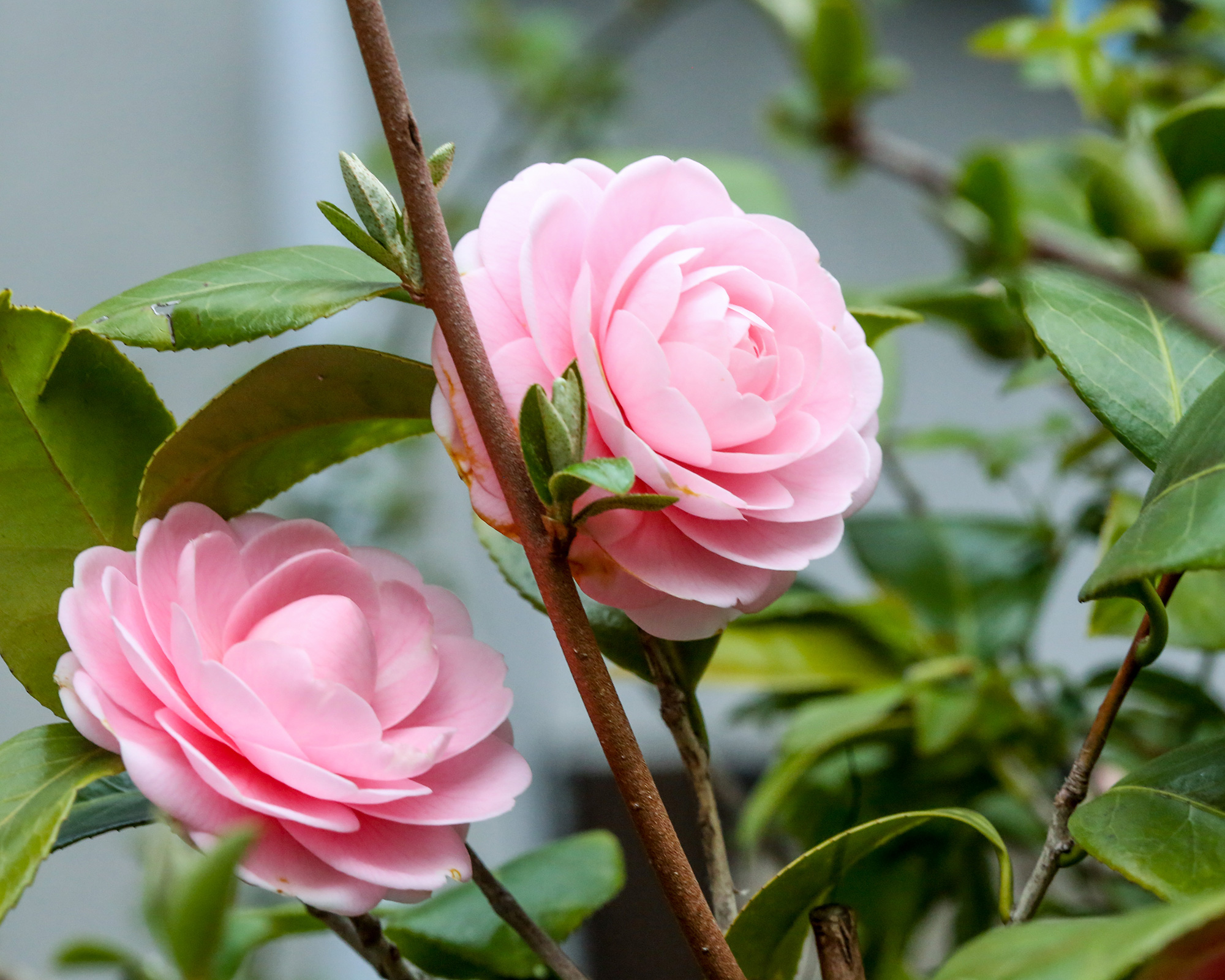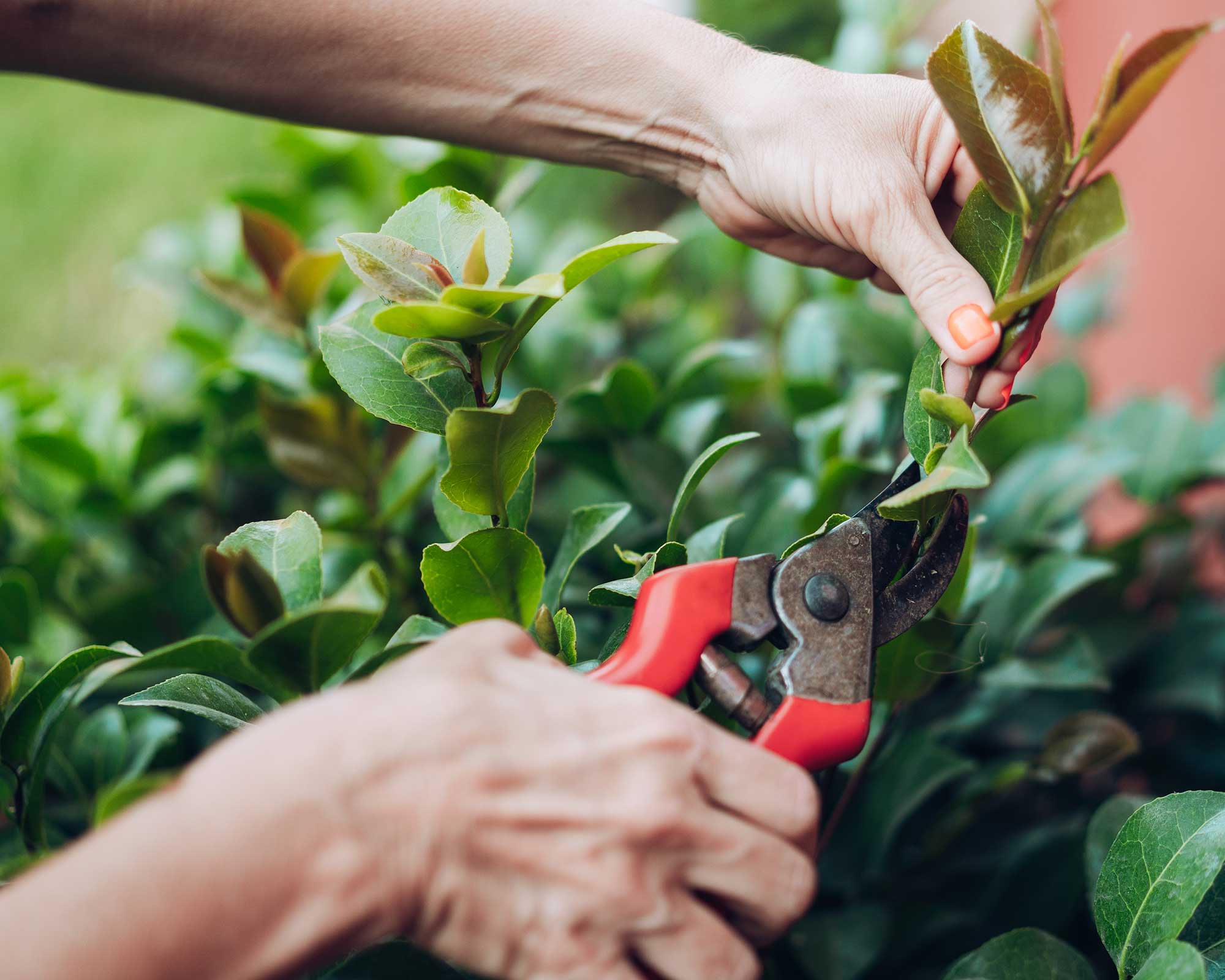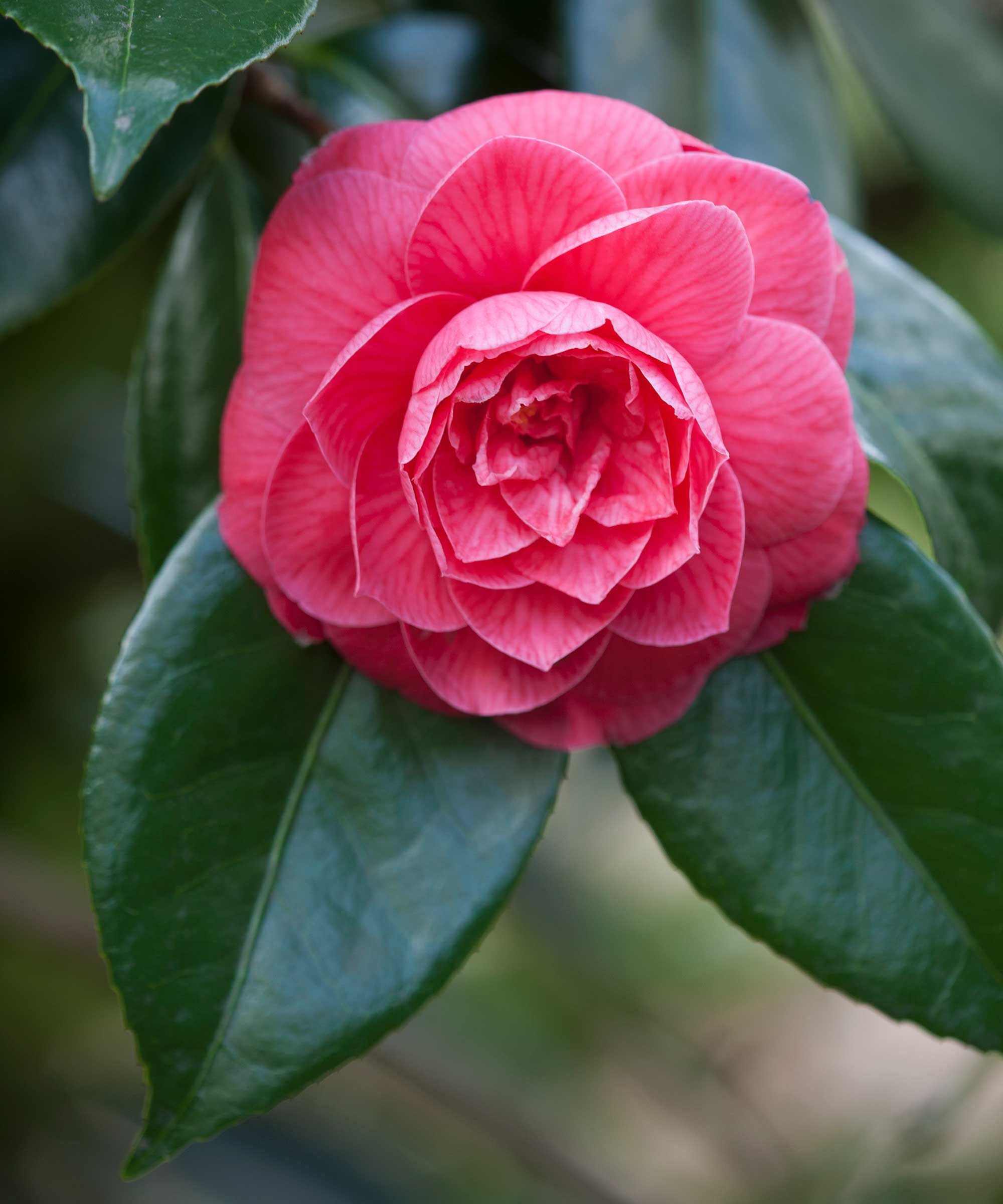Pruning camellias: top tips for this winter-flowering shrub
Get the lowdown on pruning camellias to keep these plants looking their best


Pruning camellias isn't a crucial task when it comes to caring for these stunning shrubs. But, done properly, it does have its benefits.
If you've already learned how to grow camellias and have one of these structural plants in your backyard, you'll know the value they bring. An evergreen, they'll provide glossy foliage all year long, and will happily grow in shadier spots, whether in the ground or in a container. But of course, it's their blooms that really steal the show, lighting up the winter garden in shades of pink, red and white.
Sometimes, these shrubs can outgrow their space or start to look straggly. And occasionally, very old plants need their vitality restored. Pruning camellias can help – and our tips explain how.

When is the best time for pruning camellias?
Pruning camellias is a spring garden job, to be done right after the shrubs have finished flowering but before new buds break (usually in late spring). Doing so at this time reduces the risk of cutting off new growth, which means you'll still get plenty of blooms the following season, explains the experts at Thompson & Morgan.
If you plan to cut yours back hard to rejuvenate it, however, do so in early spring. Bear in mind that it can be a couple of years for camellias to flower to their full potential after this, says the RHS.

Pruning camellias to reduce their size
Sometimes, these winter flowering shrubs can start taking up too much space, particularly in a small garden. If yours is beginning to get in the way, you can trim it back 12in (30cm) or so to a more manageable size. Exposing the soil beneath can also be beneficial as it makes it easier to apply fertilizer and mulch.
'It doesn’t matter where you start – top or bottom,' says John Negus, a gardening expert from Amateur Gardening. 'The important thing is to maintain a rounded symmetry.
'Use sharp secateurs and, ideally, cut to just above a leaf,' he continues. The sharpness of your pruning tool is important: 'A sharp cut will heal quicker than a jagged cut, which will also minimize the likelihood of disease investing a cut during pruning,' explains the experts at the American Camellia Society.
While you've got your secateurs handy, remove any dead or diseased branches, too. You can also cut out crisscrossing branches to reduce congestion if necessary – this will improve airflow and help light to filter through, which encourages a healthier plant.
Once you've finished pruning camellias, strong new shoots should soon appear.

Pruning old camellia plants to restore them
There are lots of stunning types of camellias to brighten up backyards. But, after a few years of growth, established shrubs can start to look tired and lackluster. You can prune them back hard to give them a new lease of life, however, it's important to go slowly.
Pruning a camellia to regenerate it is best done in stages over two or three years, says the Amateur Gardening experts.
After sharpening and cleaning your pruning shears, cut back up to one-third of the stems. 'The new shoots will come from the point at which the stem was cut.
'The following year, another third of the stems can be cut back, and the year after, the remaining third,' they explain.

Pruning young camellia plants to improve their shape
Pruning camellias can also help younger plants establish a bushy, desirable form.
'Young plants often develop a leggy appearance and benefit from formative pruning to encourage branching, a dense habit and a good shape,' says John.
'Reduce the weakest and leggiest stems to two or three buds from their point of origin. New growth is likely to come from just below the pruning cuts, so you might also choose to cut back some of the other stems to encourage a good shape.'

The garden was always a big part of Holly's life growing up, as was the surrounding New Forest where she lived. Her appreciation for the great outdoors has only grown since then. She's been an allotment keeper, a professional gardener, and a botanical illustrator – plants are her passion.
